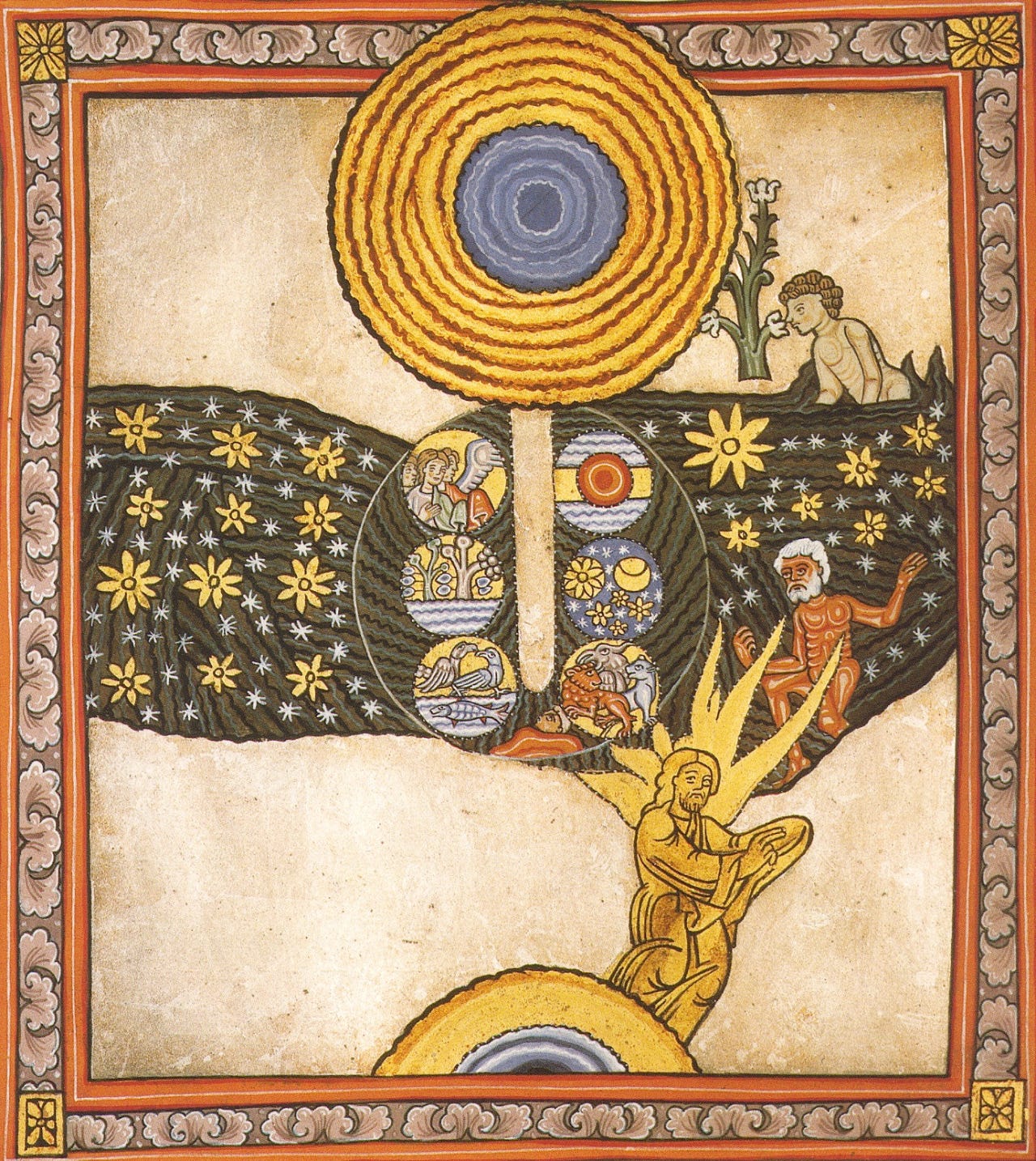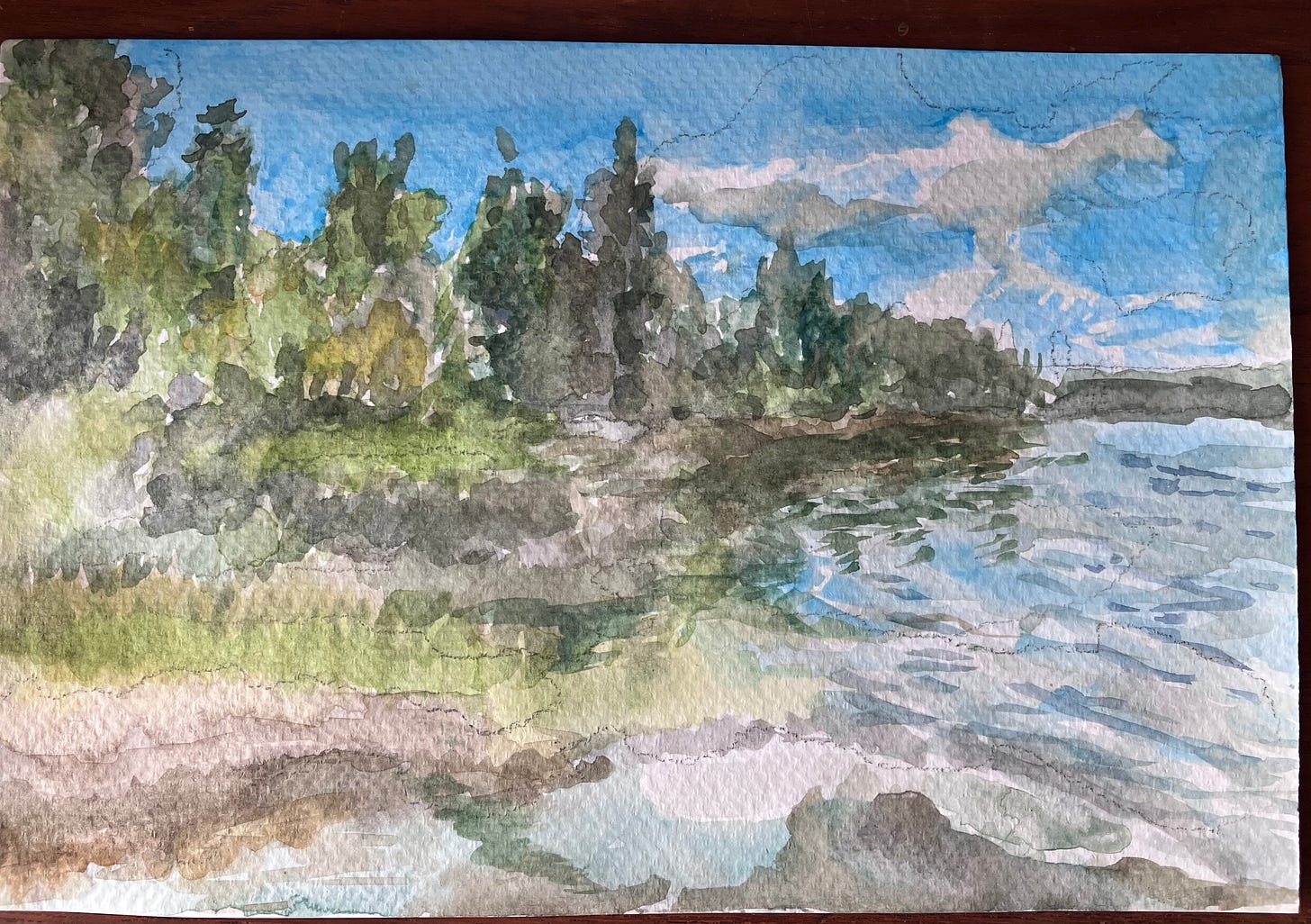I’d finally gotten a carload of boys buckled down though I was pretty sure we were going to be late. As I shushed requests for music and pleaded for quiet, suddenly one of them yelled: mama, a bowd! Sure enough, on the climbing dome in the front yard was a brownish bird with a brilliantly scarlet head, nonchalantly twitching its tail. Ah. Well, everything stops for a bird. We craned our necks, also spotting its mate. Finally I made the connection with my memory — you guys, it’s a purple finch!
The kids looked at me with that wary curiosity they accord to grownups they think might be putting them on. No really, I insisted. I just can’t remember why we call them purple, not red. What they were doing down here in Minneapolis was mystery upon mystery since they normally prefer the cool reaches of the arrowhead region up near Lake Superior.
As I found out later it turns out that the Latin word purpureus covers a wide range of color and refers to crimson dye obtained from some mollusks, formerly used for fabrics worn by an emperor or senior magistrate in ancient Rome or Byzantium. The rock porphyry (that one with the reddish background and the bits of feldspar you sometimes find along the shore and we used to think were “fossils” when we were little) shares the same root via Greek porphura.
Was it red or purple? Yes. Anyone else remember The Dress? We need some other way of thinking about this.
Simone Weil talks about how beauty is not the attribute of matter but rather a relation of the world to our sensibility. Beauty is an in-between, a dialogue. My perception and the thing I’m knowing are in a friendship. If this is true, then a hindrance or misunderstanding of what is beautiful could be a problem with me. (Darn it.) This is why we say that “beauty is in the eye of the beholder.” It’s a cliche that when taken literally is actually quite breathtaking. The beauty is in your eye, every bit as much as that cataract that your father-in-law had taken out was, every bit as much as that hapless gnat on the ballfield who met his end squished into your frustrated hand. Something could very well be amiss with my vision.
On the other hand, beauty is not solely in our eye — that is only a half-truth and as we all know, half-truths can be devastatingly wrong. Because beauty is a relationship between our eyes and the world, it also depends on the world reaching out to us.
Hildegard von Bingen, the 12th century poet, visual artist, philosopher, composer, musician, herbalist, church leader, political force, etcetera — she had something in her eye and it turned out to be a good thing. And the world reached out to her through it. Everywhere she looked she saw a certain hue in life, and it was green. Maybe she tried to shake it out but eventually she adopted it as a way of seeing and even gave it an original name, viriditas. This word to her meant: greenness, fertility, life, truth, living fully, abundance, beauty, etc. It literally colored all of her work, though she loved all colors.
I found a gorgeous recording of her Canticles of Ecstasy on CD for 49 cents the other day. Here’s a portion of her song O noblissima viriditas from that collection where she celebrates this force as a servant of God. I recommend you listen to the album in its entirety on a long walk, a drive across fields, or while you have a tedious job like laundry, just so that you can get into the zone of the sounds.
O noblest green viridity,
you're rooted in the sun
and in the clear
bright calm
you shine within a wheel
no earthly excellence
can comprehend:
You are surrounded by
the embraces of the service,
the ministries divine.
As morning’s dawn you blush,
as sunny flame you burn.1
If beauty is in-between, then color seems to be one way we name this friendship between our perception and the world that Simone talks about. We have been like this our whole lives. There is scarcely a more important question in the mind of a child prior to the age of six than What is your favorite color? I used to think of this as trivial chit-chat, but I am probably in the wrong. I am happy to be so. And so they notice — those tiny philosophers — they notice that the purple finch on the dome was actually red (and brown), and yet accept it eventually, for Purple Finch is his name after all. Like Juliet, they reconcile themselves to the beauty in conversation with their souls (!!!) and say in so many words, with the explicit name kind of held loosely, like an afterthought:
What's in a name? That which we call a rose
By any other name would smell as sweet;
So Romeo would, were he not Romeo call'd,
Retain that dear perfection which he owes
Without that title.
In Hildegard’s time (as in ours) nuns at Rupertsberg wore brown and black and sometimes grey. She wouldn’t have any of it. The sisters of her order wore white and a small circlet of gold on their heads. On high feast days, she is thought to have clothed “some in verdant green cloaks and others in the sky-blue of the Incarnate Word” and lots of heavy jewelry, based on some of the designs found in her manuscripts. As you can imagine, she was roundly criticized for these extravagances, but she wanted them to dress as they truly were — brides of Christ and daughters of a king. She wished for a unified whole between color, language, reality, and persons.
In reading about Hildegard’s viriditas I could see how green really became her take on the world, and maybe even the way that the world reached back to her and impressed itself upon her. (She had extensive visions of these things.) I wondered if Hildegard’s greenness could be found elsewhere, so I picked up a book at random — a paperback copy of Emily Dickinson’s poems — and cruised through looking for references to green. And kept looking. And kept looking. Finally I found a paltry one or two nods to something vaguely verdant but what was surprising was actually the lack of it! There was, however, a surfeit of scarlets, yellows, and blues! The brain was even blue, and put on a scale next to no less than the sky, the ocean, and God Himself:
The brain is wider than the sky, For, put them side by side, The one, the other will include With ease, and you beside The brain is deeper than the sea, For, hold them, blue to blue, The one the other will absorb, As sponges, buckets do. The brain is just the weight of God, For, lift them, pound for pound, And they will differ, if they do, As syllable from sound.
Like Hildegard, Emily has her own way of putting humans in their proper place in creation, “a little lower than the angels and crowned with glory and majesty.” The poet has shards of cerulean, sapphire, and turquoise stuck in her eye, which results in a cool assessment that, on balance, our mind can bring us into contact with God. I don’t think she’s equating the mind with God or Nature (something she’s definitely been accused of), but rather she can see, like Simone Weil, that beauty is a conversation during which the brain rests for a moment side-by-side with something — the sky, ocean, or God. — and coheres or merges with it. And color is one major language used in that dialogue.
In The Art of Memoir, poet and memoirist Mary Karr says “we beam the landscape from our eyeballs.” Maybe it’s my recent discovery of my need for reading glasses that makes me long for an on-board lighting system, but I love this image of light emanating light like little flashlights onto whatever I’m seeing, making it clearer and more rich in color.
The crazy thing about perceiving the order of the world is that it is one place where the normally-veiled love of God is made known to us, according to Simone Weil. When we see that order, we want it for ourselves.
The love of power amounts to a desire to establish order among men and things around oneself, either on a huge or a small scale, and this desire for order is a result of a sense of beauty. This unsatisfied appetite, the desire to keep on increasing, is due precisely to a desire of contact with universal beauty.
We grasp and hang on to it for dear life. After all, the fruit of the garden was pleasing to the eyes among its other attributes.
A few days after the visit from Purple Finch, we were in Home Depot and the kids saw the wall of paint samples. Ooo! What’s this? They wanted to have them. I let them pick out one to “keep.” They all danced around as if in agonizing pain, trying to make this final decision. But can you hold a color, really? You can try to domesticate it by naming it, by painting a wall of your house and telling yourself you have it. The color the four-year-old chose was “firecracker” and mine “viridian green” which only seemed to confirm how much we wanted them. Language can be a means of control, because it limits a Thing. This is not a bad thing in and of itself (it is necessary!) but we must remain aware of this superpower.
Maybe this is why we find ourselves drawn so much to visual art these days, even dabbling in watercolors, photography, mosaic or acrylic ourselves. It is easy to see that we are oversaturated and exhausted by written and spoken language (hello, substack — I love you!) and its imperial and somewhat spurious claims at times. But if we could just give our attention to a landscape for a while and try to reflect its colors back to our eyes, this provides a kind of existential relief. Colors are an in-between we can live with and converse with, and there’s not as much pressure.
Turns out, you can no more possess a color than you can reality. If you try to settle on purple, it might just slip into red. If you see green in something, you may find it spilling into every corner or your life and becoming your guiding principle.
Simone even goes so far to describe beauty’s unpredictability by saying that it is the mouth of a labyrinth where God waits inside to devour us. Perhaps it is after having devoured the fruit of the garden in an effort to name and possess our own destiny that we must have another, new encounter with beauty, where we are again lured in and gobbled up. If so, that mouth seems to being wearing a very bright and fetching hue of lipstick.
Note, this translation is from Nathan M. Campbell at the International Hildegard Society. (Yes, that is a thing — I used to go to their talks and table at the International Medieval Congress in Kalamazoo every year because they were so fascinating!) Nathan’s article “Commentary: Themes and Theology” is a wonderful read, as well as Beverly Lomer’s on the same page.







Oh, this is a marvelous read. Please take the time to devour it. You will be satisfied.
I really enjoyed your article. So rich and full of color. Thought I’d share and hope you enjoy this song Bein’ Green by Van Morrison
https://youtu.be/zYptr7SdpHA?si=P6y-8f2WqsgSMxWY